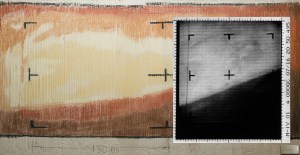Cassini Significant Event Report
For Week Ending 01/18/02
The most recent spacecraft telemetry was acquired from the Goldstone tracking station on Wednesday,
January 16. The Cassini spacecraft is in an excellent state of health and
is operating normally. Information on the spacecraft's position and speed can be viewed on the "Present Position" web page.
The C29 sequence concluded operations this week with deregistration occurring on Sunday, January 13. The
C30 background sequence, an Imaging Science Subsystem (ISS) decontamination mini-sequence, and a
Composite Infrared Spectrometer (CIRS) functional test mini-sequence were all successfully uplinked and
registered. The background sequence began execution on Monday, January 14.
Science activities this week included Radio and Plasma Wave Science (RPWS) Periodic Instrument
Maintenance, upload of RPWS and Ultraviolet Imaging Spectrometer (UVIS) Instrument Expanded Blocks,
and execution of the CIRS functional test mini-sequence.
Spacecraft activities included an Attitude Control Subsystem (ACS) high-water mark clear, an ACS Periodic
Engineering Maintenance including Backup ALF Injection Loader maintenance, engine gimbal, and Reaction
Wheel Assembly exercises.
Science Planning completed development for the C31 sequence. The Uplink Office (ULO) has received the
necessary input products and held the Subsequence Generation kick off meeting for this sequence. Science
Planning development of C32 has begun. The Program briefing for this sequence is scheduled for January 28.
This week JPL hosted members of the Cassini science community and interested members of the flight team
for Cassini's #27th meeting of the Project Science Group (PSG).
Mission Assurance has reviewed an updated procedure regarding real-time commanding. Both the procedure
and checklist were extensively reviewed by flight team members and now become the official version. This
procedure goes into effect immediately and will be used by anyone who is leading an uplink session, to ensure
consistency between sessions.
Mission Assurance completed an additional review of the NASA Lessons Learned database, for lessons that
could be applicable to Cassini. These lessons will be forwarded to Cassini team members, to ensure that
lessons learned from previous projects are incorporated into the way Cassini conducts Mission Operations.
The Deep Space Communications Complex Spectrum Processors (DSP) were decommissioned across the
entire Deep Space Network. These are the old type of open-loop receivers that the Radio Science Receivers
are replacing.
In support of the Uplink Critical Design Review, all action items being held for uplink were statused and about
half (of a total of 143) were closed. Many of the remaining big-ticket items relate to adaptability, pointing and
Science and Sequence Update Process issues that will be closed with the delivery of the associated
operations concepts.
A Delivery Coordination Meeting was held for MSS D7.6.2. The change was a minor patch to insert an
updated Trajectory Correction Maneuver block needed by SEQGEN to support TCM-18 scheduled for
Cruise 31.
The Mars Exploration Rovers (MER) and Space Infrared Telescope Facility projects have expressed interest
in learning from Cassini's experience in security and ITAR issues. The team is currently discussing possible
support options. MER is very interested in having security support. A memo of understanding still needs to be
written to establish roles and support efforts.
The current national focus in grades K-4 is literacy. Cassini Outreach will be developing ways of being
incorporated into the literacy curriculum (reading, writing) and thus maintain a foothold for science in early
education. Grades 5-8 follow a mixed discipline curriculum including math and science. For grades 9-12
beta testing has been performed at some schools where children have been given access to planetary data
sets. The experience has generated a great deal of excitement on the part of educators and students alike.
Cassini intends to explore this area of education for these grades. The focus for informal education will be
partnerships with museums, planetariums, and youth groups such as 4-H and boy and girls clubs.
Additional information about Cassini-Huygens is online at http://saturn.jpl.nasa.gov.
Cassini will begin orbiting Saturn on July 1, 2004, and release its piggybacked Huygens probe about six months later for descent through the thick atmosphere of the moon Titan. Cassini-Huygens is a cooperative mission of NASA, the European Space Agency and the Italian Space Agency. JPL, a division of the California Institute of Technology in Pasadena, manages the mission for NASA's Office of Space Science, Washington, D.C.
Media Relations Office
Jet Propulsion Laboratory
California Institute of
Technology
National Aeronautics and Space
Administration
Pasadena, Calif. 91109.
Telephone (818) 354-5011



































